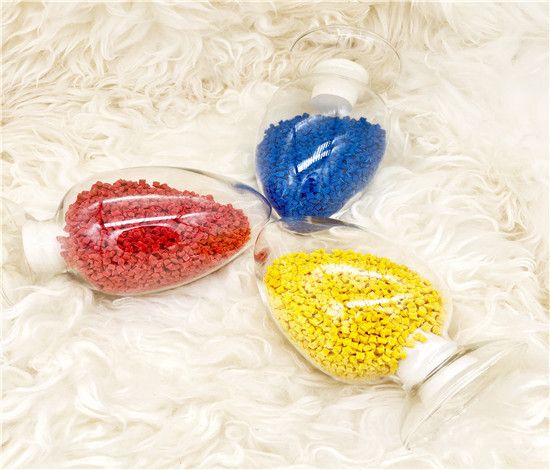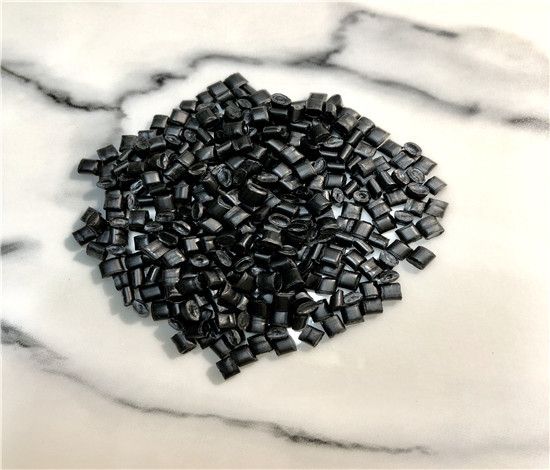ABS
Performance of ABS
ABS is composed of three chemical monomers acrylonitrile, butadiene and styrene. From the perspective of morphology, ABS is a non-crystalline material, with high mechanical strength and a good “strong, tough, steel” comprehensive performance. It is an amorphous polymer, ABS is a general engineering plastic, its variety, wide use, also known as “general plastic”, ABS is easy to absorb moisture, specific gravity is 1.05g/cm3 (slightly heavier than water), low shrinkage rate (0.60%), stable size, easy molding processing.
The characteristics of ABS mainly depend on the ratio of the three monomers and the molecular structure of the two phases. This allows for great flexibility in product design, and thus produces hundreds of different quality ABS materials on the market. These different quality materials provide different characteristics, such as medium to high impact resistance, low to high finish and high temperature distortion characteristics. ABS material has excellent machinability, appearance characteristics, low creep, excellent dimensional stability and high impact strength.
ABS is light yellow granular or bead opaque resin, non-toxic, tasteless, low water absorption, has good comprehensive physical and mechanical properties, such as excellent electrical properties, wear resistance, dimensional stability, chemical resistance and surface gloss, and easy to process and form. Disadvantages are weather resistance, heat resistance is poor, and flammable.
Process characteristics of ABS
ABS has high hygroscopiness and humidity sensitivity. It must be fully dried and preheated before forming and processing (drying at 80~90C for at least 2 hours), and the moisture content is controlled below 0.03%.
The melt viscosity of ABS resin is less sensitive to temperature (different from other amorphous resins). Although the injection temperature of ABS is slightly higher than that of PS, it can not have a wide warming range like PS. The viscosity of ABS can not be reduced by blind heating. The liquidity of ABS can be improved by increasing the speed of screw or injection pressure. General processing temperature in 190-235℃ is appropriate.
The melting viscosity of ABS is medium, higher than that of PS, HIPS and AS, and a higher injection pressure (500-1000 bar) is needed.
ABS material with medium and high injection speed has better effect. (unless the shape is complex and the thin-wall parts require a higher injection rate), the product is easy to produce gas lines at the mouth.
ABS molding temperature is high, its mold temperature is generally adjusted at 25-70℃. When producing larger products, the fixed mold (front mold) temperature is generally slightly higher than the moving mold (rear mold) about 5℃ is appropriate. (Mold temperature will affect the finish of plastic parts, lower temperature will lead to lower finish)
ABS should not stay in the high temperature barrel for too long (less than 30 minutes), otherwise it is easy to decompose and yellow.
Typical application range
Automotive (instrument panels, tool hatch doors, wheel covers, reflector boxes, etc.), refrigerators, high-strength tools (hair dryers, mixers, food processors, lawn mowers, etc.), telephone casings, typewriter keyboards, recreational vehicles such as golf carts and jet sledges and so on.
PMMA
Performance of PMMA
PMMA is amorphous polymer, commonly known as plexiglass. Excellent transparency, good heat resistance (thermal deformation temperature of 98℃), with good impact resistance characteristics, its products of medium mechanical strength, low surface hardness, easy to be scratched by hard objects and leave traces, compared with PS, not easy to crack, the specific gravity of 1.18g/cm3. PMMA has excellent optical properties and weather resistance. The penetration of white light is as high as 92%. PMMA products have very low birefringence, especially suitable for the production of video discs. PMMA has room temperature creep characteristics. With the increase of load and time, stress cracking can be caused.
Process characteristics of ABS
PMMA processing requirements are more strict, it is very sensitive to water and temperature, before processing to fully dry (recommended drying conditions of 90℃, 2 to 4 hours), its melt viscosity is larger, need to be formed at a high (225-245℃) and pressure, die temperature in 65-80℃ is better. PMMA is not very stable, and degradation can be caused by high temperature or prolonged residence at high temperature. The screw speed should not be too large (60% or so), thick PMMA parts are easy to appear “cavity”, need to take large gate, “low material temperature, high die temperature, slow speed” injection method to process.
Typical application range
Automotive industry (signal lamp equipment, instrument panel and so on), pharmaceutical industry (blood storage container and so on), industrial application (video disc, light scatterer), consumer goods (beverage cups, stationery and so on).
Post time: 23-11-22



